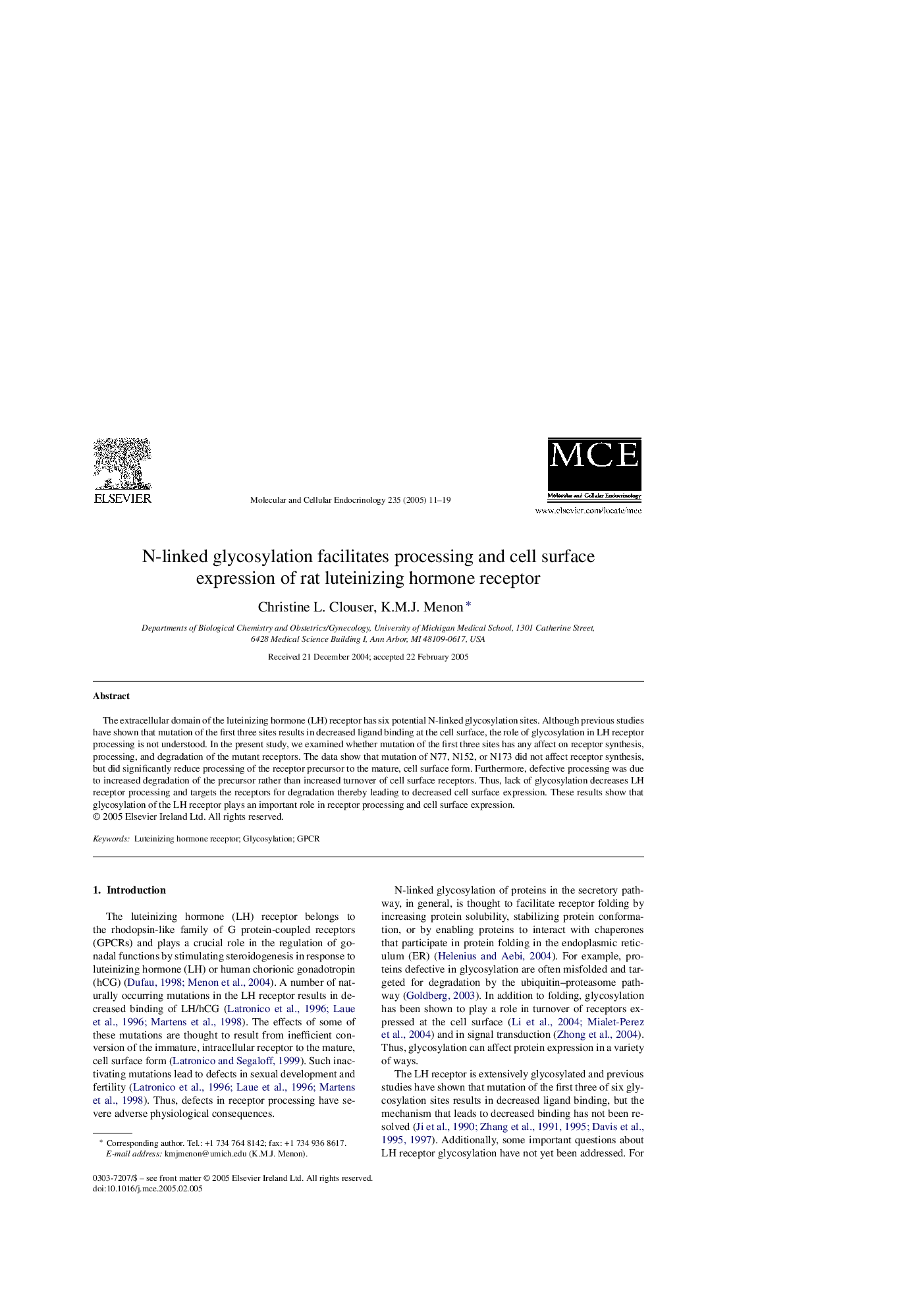| Article ID | Journal | Published Year | Pages | File Type |
|---|---|---|---|---|
| 9914975 | Molecular and Cellular Endocrinology | 2005 | 9 Pages |
Abstract
The extracellular domain of the luteinizing hormone (LH) receptor has six potential N-linked glycosylation sites. Although previous studies have shown that mutation of the first three sites results in decreased ligand binding at the cell surface, the role of glycosylation in LH receptor processing is not understood. In the present study, we examined whether mutation of the first three sites has any affect on receptor synthesis, processing, and degradation of the mutant receptors. The data show that mutation of N77, N152, or N173 did not affect receptor synthesis, but did significantly reduce processing of the receptor precursor to the mature, cell surface form. Furthermore, defective processing was due to increased degradation of the precursor rather than increased turnover of cell surface receptors. Thus, lack of glycosylation decreases LH receptor processing and targets the receptors for degradation thereby leading to decreased cell surface expression. These results show that glycosylation of the LH receptor plays an important role in receptor processing and cell surface expression.
Related Topics
Life Sciences
Biochemistry, Genetics and Molecular Biology
Cell Biology
Authors
Christine L. Clouser, K.M.J. Menon,
